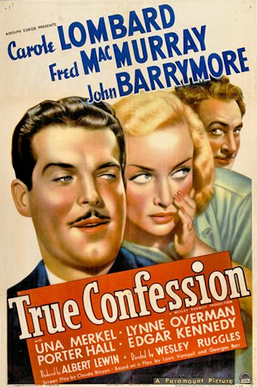 |
| Myrna Loy and William Powell in The Thin Man |
Nick Charles: William Powell
Nora Charles: Myrna Loy
Dorothy Wynant: Maureen O'Sullivan
Guild: Nat Pendleton
Mimi Wynant Jorgenson: Minna Gombell
MacCaulay: Porter Hall
Tommy: Henry Wadsworth
Gilbert Wynant: William Henry
Nunheim: Harold Huber
Chris Jorgenson: Cesar Romero
Julia Woolf: Natalie Moorhead
Morelli: Edward Brophy
Claude Wynant: Edward Ellis
Tanner: Cyril Thornton
Director: W.S. Van Dyke
Screenplay: Albert Hackett, Frances Goodrich
Based on a novel by Dashiell Hammett
Cinematography: James Wong Howe
Art direction: Cedric Gibbons
Film editing: Robert Kern
Music: William Axt
I have seen W.S. Van Dyke's
The Thin Man several times before, and I recently read Dashiell Hammett's novel, but I still couldn't remember whodunit. Even now, I'm not sure why and how the killer did things the way they were done. Which is, I think, because it doesn't really matter: The mystery is secondary to the banter of Nick and Nora and the eccentricity of the characters they encounter as her world of privilege marries with his world of cops and lowlifes. Most of the best mysteries, by which I mean those of Hammett and Raymond Chandler, are about atmosphere rather than crime: Those who want to try to solve the mystery along with the detective should read other writers who are more involved with planting clues and red herrings.
The Thin Man may have benefited from MGM's lack of interest in the project, which could have been swamped with the kind of second-guessing from the front office that often stifled the studio's films. Instead, it was treated as a routine programmer whose stars, William Powell and Myrna Loy, were second-tier and whose director, known as "One-Take Woody" Van Dyke, was known for getting things done quick and dirty -- filming took only 16 days. But Powell and Loy became first-tier stars, and the movie earned four Oscar nominations (picture, actor, director, and screenplay) and was followed by five sequels. Powell has often struck me as a surprising star, with his big nose and his dubious chin, and I used to have trouble distinguishing him from Melvyn Douglas. Even now, if you asked me to say without hesitating whether it was Powell or Douglas in
My Man Godfrey (Gregory La Cava, 1936), or Douglas or Powell in
Ninotchka (Ernst Lubitsch, 1939), I might stumble a bit. But he had undeniable chemistry with Loy, so much so that they got re-teamed in movies outside the
Thin Man series like
The Great Ziegfeld (Robert Z. Leonard, 1936),
Libeled Lady (Jack Conway, 1936), and others.
The Thin Man also has a little more zip and zest than some of the films made after the Production Code clamped down, though Nick and Nora, like other married couples, were forced into twin beds. They still drink to an unholy excess, of course.






